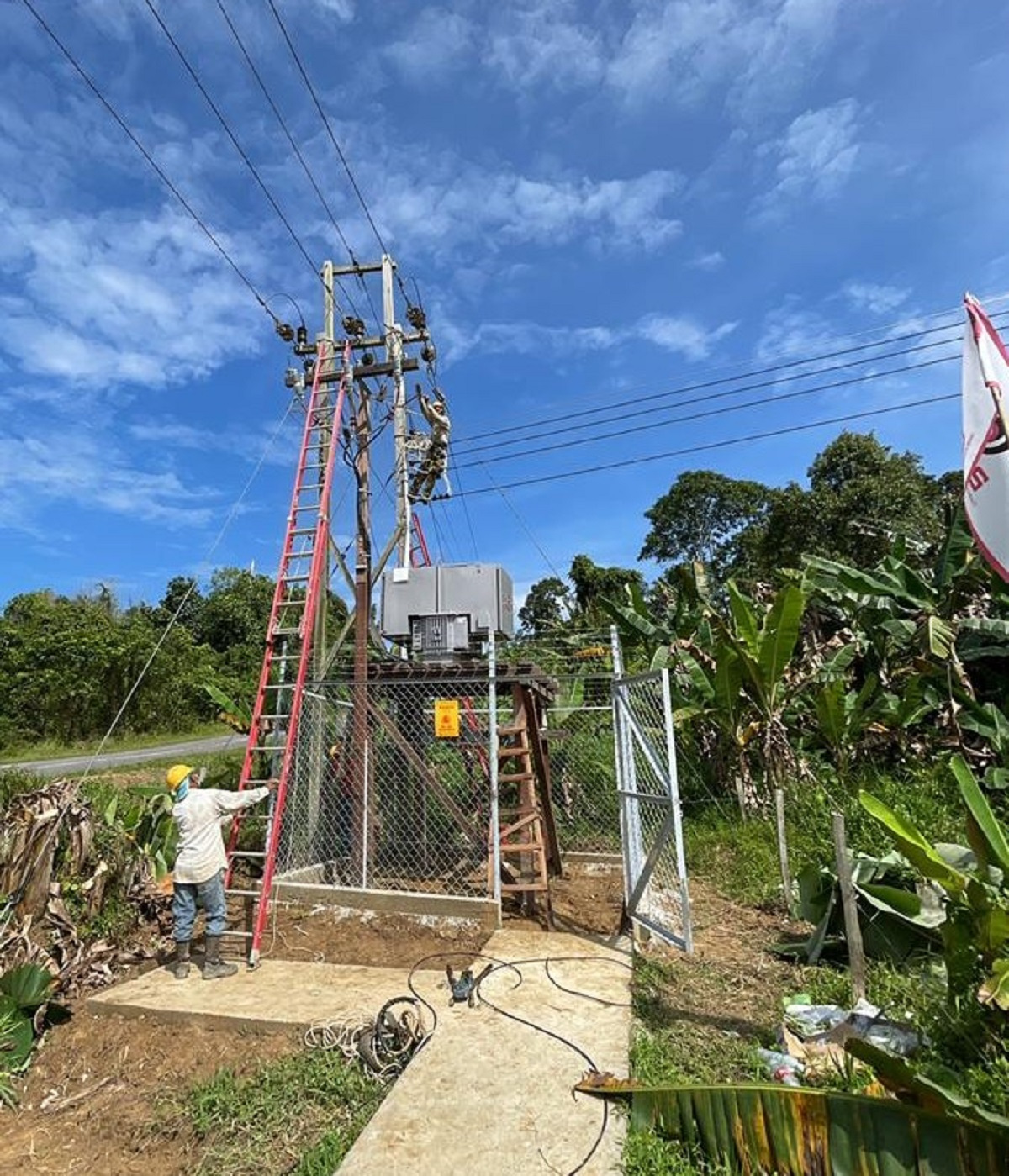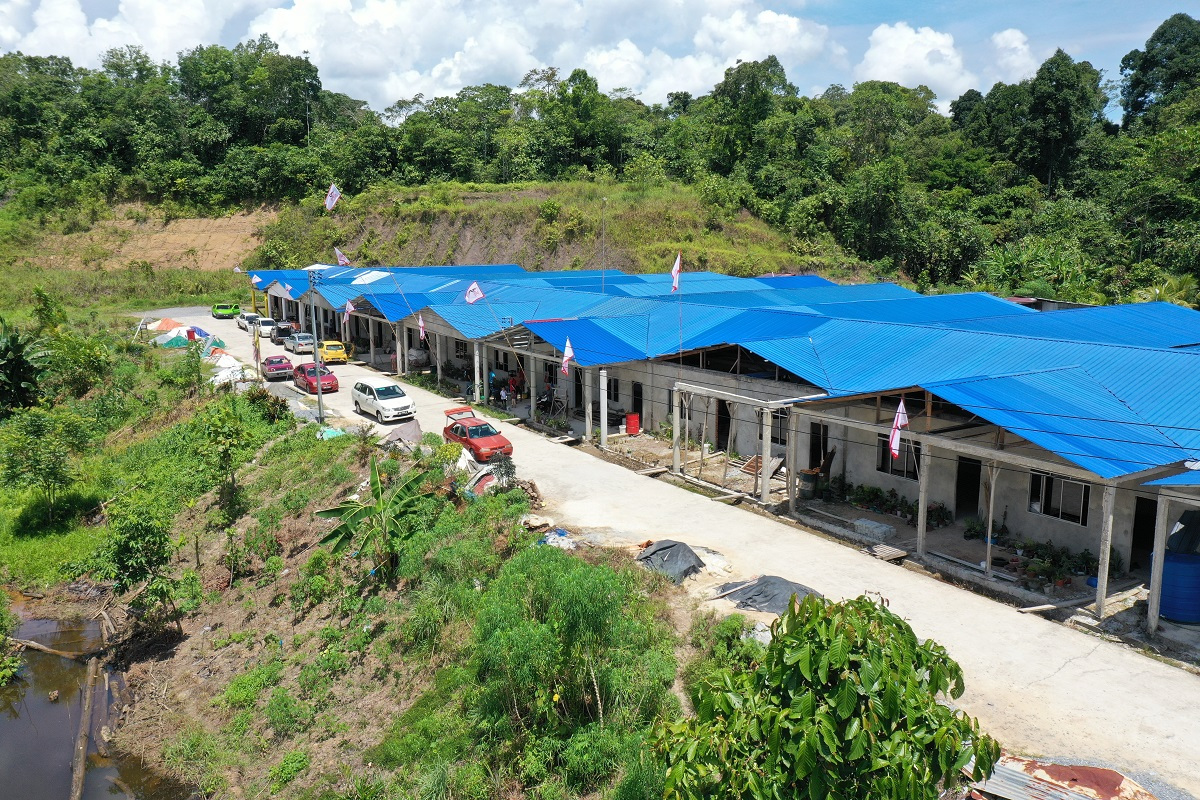

NEWS & UPDATES
Lighting Up Rural Households in Northern Sarawak
Providing Access to 24-Hour Electricity via Grid Extensions and Off-Grid Solutions
MIRI
29 JUNE 2021
The Sarawak Government, through the Ministry of Utilities Sarawak and its implementing agency Sarawak Energy is accelerating the delivery of rural electrification projects to ensure access to reliable and affordable electricity supply for the whole of Sarawak by 2025 including residents of rural Northern Sarawak.
Since 2009, about 18,000 rural households have been connected to reliable electricity supply in the mountainous Limbang division through the simultaneous implementation of the Rural Electrification Scheme or RES, and Sarawak Alternative Rural Electrification Scheme or SARES. This includes about 250 households in the hinterland which have been given access to 24-hour electricity under SARES, a sustainable stop-gap initiative to power up the most remote households with no road access, whilst conventional electrification via the grid makes its way to them.
By the end of 2021, almost 200 more households in the division will be connected to the grid, including about 120 households recovered from projects left abandoned by a previous contractor since 5 years ago. By 2023, a further 866 households will have access to reliable 24-hour electricity to achieve full electrification for the entire division.
These form part of the 150,000 rural households throughout Sarawak that have been lighted up under the various rural electrification strategies since 2009. Electricity supply connection was through extension of the grid system for rural areas with road accessibility under RES, establishing localised micro-grids under hybrid system for larger communities distant from the main grid; and smaller standalone solar power systems for the most remote areas through SARES.
Sarawak Minister for Utilities Dato Sri Dr Stephen Rundi Anak Utom said, “About 45% of Sarawakians live in longhouses, kampongs or smaller town in our rural areas. Following the development of the Projek Rakyat initiative to accelerate the Rural Electrification Master Plan 2018, we have been able to really step up on our electrification efforts. We are thankful to Sarawak Government and YAB Chief Minister that our plan has been supported with an allocation of RM2.37 billion to cover rural transmission and distribution projects as well the implementation of SARES in distant villages. Rural electrification coverage in Sarawak has risen to 95% in 2020 and is expected to reach 97% in the coming months.”
“I would like to express my thanks to the rural electrification team including contractors and subcontractors, as well as all our partner agencies such as Resident & District Offices as well as JKR for their hard works. Another big success factor is the leadership provided by the community leaders and the support of our rural folk who look forward to the basic utilities their counterparts in town also enjoy. I look forward to the day when we can confidently say there is no Sarawakian that is left in the dark,” Rundi continued.
Despite the many challenges which include logistics due to area remoteness, wayleave issues, acceptance from villagers and the current global COVID-19 pandemic, Rundi assured the public that his Ministry, working closely with Sarawak Energy, remains committed to ensuring that rural Sarawak will have access to 24-hour reliable and affordable electricity.
Datu Haji Sharbini Suhaili, Sarawak Energy Group Chief Executive Officer said, “There is consistent and continuous effort to ensure we are able to provide full electricity coverage for the Northern Region in the next few years.”
“In July 2020, we commissioned our new Kota 2 mini hydro power plant in Lawas, a run-of-river scheme with a total installed capacity of 10.5MW. This has boosted our generation capacity and reduced the dependence on diesel power generation in northern Sarawak pending the completion of our Extra High Voltage or EHV transmission projects to connect Limbang and Lawas to our main electrical grid. Our team is also enhancing and reinforcing the electrical distribution system in the area.”
“While the current restrictions under the nationwide Movement Control Order have presented uncertainties and challenges to safe and timely work progression, works in the area are moving under full compliance with the relevant Standard Operating Procedures and stringent in-house COVID-19 precautionary measures.”
A new distribution system technology known as the Medium Voltage Covered Conductor (MVCC) has been adopted to connect Lawas town under the Limbang division to rural Bakelalan taking into account the area’s harsh geographical conditions. The first phase of the project has commenced and the implementation shall be synchronised with the commissioning of the new Lawas Town Extra High Voltage substation in 2022. MVCC is able to withstand momentary contact with crops or vegetation without causing interruptions and this will help in strengthening supply reliability.
The communities in Bakelalan, located about 8 hours from Lawas town by uneven gravel roads and old logging tracks, engage mostly in farming and agricultural activities supplemented by homestay businesses run by locals. However due to the distance from the towns, communities are rarely able to market their produce. The lack of electricity also means that the processing of the ‘Adan’ rice and highland salt is either done manually or powered by diesel generators which can only run for limited times. With steady electricity supply by 2023, residents can have access to refrigeration as well as modern machinery that can boost productivity.
Rundi further reiterated, “The communities in rural Lawas will be able to process their produce and sell them in bigger and further away towns. Similar planning and implementation of rural electrifications throughout Sarawak are undertaken to achieve full supply coverage State-wide. With access to reliable electricity supply, our rural communities will enjoy greater convenience and opportunities for a better standard of living.”


The Rural Electrification Scheme or RES involves extension of the grid system for rural households with road accessibility.


Connection works are underway for Rh Ungi in the Limbang Division. Since 2009, about 18,000 rural homes in the Division have been given access to reliable 24-hour electricity.